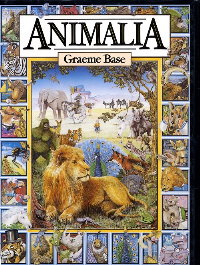
Animalia is an illustrated children's book by Graeme Base. It was originally published in 1986, followed by a tenth anniversary edition in 1996, and a 25th anniversary edition in 2012. Over four million copies have been sold worldwide. A special numbered and signed anniversary edition was also published in 1996, with an embossed gold jacket.

A book is a medium for recording information in the form of writing or images. Modern books are typically in codex format, composed of many pages that are bound together and protected by a cover; they were preceded by several earlier formats, including the scroll and the tablet. The book publishing process is the series of steps involved in their creation and dissemination.
Webcomics are comics published on the internet, such as on a website or a mobile app. While many webcomics are published exclusively online, others are also published in magazines, newspapers, or comic books. Webcomics can be compared to self-published print comics in that anyone with an Internet connection can publish their own webcomic. Readership levels vary widely; many are read only by the creator's immediate friends and family, while some of the most widely read have audiences of well over one million readers. Webcomics range from traditional comic strips and graphic novels to avant garde comics, and cover many genres, styles, and subjects. They sometimes take on the role of a comic blog. The term web cartoonist is sometimes used to refer to someone who creates webcomics.
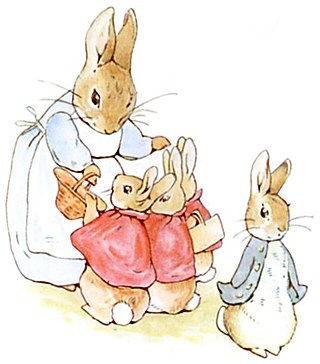
A picture book combines visual and verbal narratives in a book format, most often aimed at young children. With the narrative told primarily through text, they are distinct from comics, which do so primarily through sequential images.
The World Book Encyclopedia is an American encyclopedia. World Book was first published in 1917. Since 1925, a new edition of the encyclopedia has been published annually. Although published online in digital form for a number of years, World Book is currently the only American encyclopedia which also still provides a print edition. The encyclopedia is designed to cover major areas of knowledge uniformly, but it shows particular strength in scientific, technical, historical and medical subjects.
For Dummies is an extensive series of instructional reference books which are intended to present non-intimidating guides for readers new to the various topics covered. The series has been a worldwide success with editions in numerous languages.
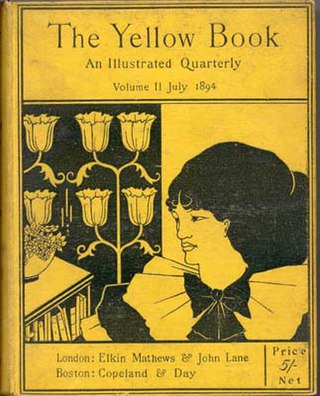
The Yellow Book was a British quarterly literary periodical that was published in London from 1894 to 1897. It was published at The Bodley Head Publishing House by Elkin Mathews and John Lane, and later by John Lane alone, and edited by the American Henry Harland. The periodical was priced at 5 shillings and lent its name to the "Yellow Nineties", referring to the decade of its operation.

The Gutenberg Bible, also known as the 42-line Bible, the Mazarin Bible or the B42, was the earliest major book printed in Europe using mass-produced metal movable type. It marked the start of the "Gutenberg Revolution" and the age of printed books in the West. The book is valued and revered for its high aesthetic and artistic qualities and its historical significance.
The bibliographical definition of an edition is all copies of a book printed from substantially the same setting of type, including all minor typographical variants.

Strategy guides are instruction books that contain hints or complete solutions to specific video games. The line between strategy guides and video game walkthroughs is somewhat blurred, with the former often containing or being written around the latter. Strategy guides are often published in print, both in book form and also as articles within video game magazines. In cases of exceptionally popular game titles, guides may be sold through more mainstream publication channels, such as bookstores or even newsstands. Some publishers also sell E-Book versions on their websites.
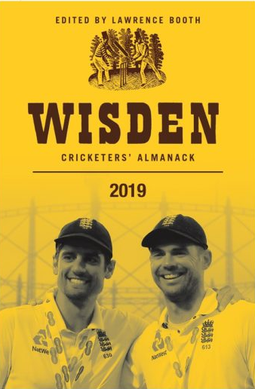
Wisden Cricketers' Almanack, or simply Wisden, colloquially the Bible of Cricket, is a cricket reference book published annually in the United Kingdom. The description "Bible of cricket" has been applied to Wisden since the early 1900s.
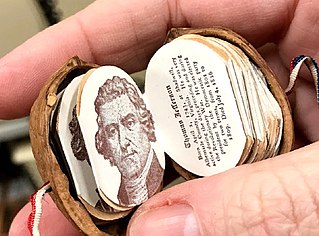
A miniature book is a very small book. Standards for what may be termed a miniature rather than just a small book have changed through time. Today, most collectors consider a book to be miniature only if it is 3 inches or smaller in height, width, and thickness, particularly in the United States. Many collectors consider nineteenth-century and earlier books of 4 inches to fit in the category of miniatures. Book from 3–4 inches in all dimensions are termed macrominiature books. Books less than 1 inch in all dimensions are called microminiature books. Books less than 1/4 inch in all dimensions are known as ultra-microminiature books.
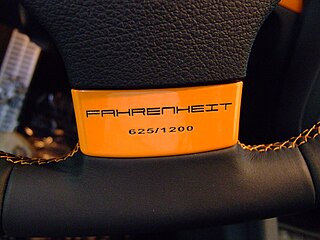
The terms special edition, limited edition, and variants such as deluxe edition, or collector's edition, are used as a marketing incentive for various kinds of products, originally published products related to the arts, such as books, prints, recorded music and films, and video games, but now including clothing, cars, fine wine, and whisky, among other products. A limited edition is restricted in the number of copies produced, although in fact the number may be very low or very high. Suzuki (2008) defines limited edition products as those “sold in a state that makes them difficult to obtain because of companies limiting their availability to a certain period, quantity, region, or channel". A special edition implies there is extra material of some kind included. The term is frequently used on DVD film releases, often when the so-called "special" edition is actually the only version released.

Private Parts is the first book by American radio personality Howard Stern. It was released on October 7, 1993, by Simon & Schuster and edited by Larry "Ratso" Sloman and Judith Regan. By mid-1992, Stern's radio show The Howard Stern Show had become the number one morning program in New York City and had hosted the Saturday night television show The Howard Stern Show on WWOR-TV, since 1990. After development on a feature film for New Line Cinema fell through, Stern secured a deal with Simon & Schuster in early 1993 to write a book.
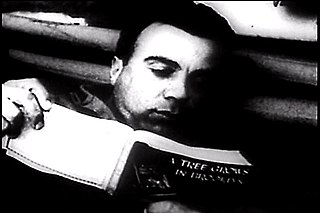
Armed Services Editions (ASEs) were small paperback books of fiction and nonfiction that were distributed in the American military during World War II. From 1943 to 1947, some 122 million copies of more than 1,300 ASE titles were distributed to service members, with whom they were enormously popular. The ASEs were edited and printed by the Council on Books in Wartime (CBW), an American non-profit organization, in order to provide entertainment to soldiers serving overseas, while also educating them about political, historical, and military issues. The slogan of the CBW was: "Books are weapons in the war of ideas."

Edward William Cole, also known as "E. W. Cole of the Book Arcade", was a bookseller and founder of the Cole's Book Arcade, Melbourne, Victoria, Australia.

Edmund Evans was an English wood-engraver and colour printer during the Victorian era. He specialized in full-colour printing, a technique which, in part because of his work, became popular in the mid-19th century. He employed and collaborated with illustrators such as Walter Crane, Randolph Caldecott, Kate Greenaway and Richard Doyle to produce what are now considered to be classic children's books. Little is known about his life, although he wrote a short autobiography before his death in 1905 in which he described his life as a printer in Victorian London.

Andrews McMeel Syndication is an American content syndicate which provides syndication in print, online and on mobile devices for a number of lifestyle and opinion columns, comic strips and cartoons and various other content. Some of its best-known products include Dear Abby, Doonesbury, Ziggy, Garfield, Ann Coulter, Richard Roeper and News of the Weird. A subsidiary of Andrews McMeel Universal, it is headquartered in Kansas City, Missouri. It was formed in 2009 and renamed in January 2017.

Toy books were illustrated children's books that became popular in England's Victorian era. The earliest toy books were typically paperbound, with six illustrated pages and sold for sixpence; larger and more elaborate editions became popular later in the century. In the mid-19th century picture books began to be made for children, with illustrations dominating the text rather than supplementing the text.

Mickey Mouse Magazine is an American Disney comics publication that preceded the popular 1940 anthology comic book Walt Disney's Comics and Stories. There were three versions of the title – two promotional giveaway magazines published from 1933 to 1935, and a newsstand magazine published from 1935 to 1940. The publication gradually evolved from a 16-page booklet of illustrated text stories and single-page comic panels into a 64-page comic book featuring reprints of the Mickey Mouse and Donald Duck comic strips.















